|
Books Should Be Free Loyal Books Free Public Domain Audiobooks & eBook Downloads |
|
|
Books Should Be Free Loyal Books Free Public Domain Audiobooks & eBook Downloads |
|
Literature |
|---|
|
Book type:
Sort by:
View by:
|
By: Katherine Mansfield (1888-1923) | |
|---|---|
 In a German Pension
In a German Pension
The first collected volume of short stories of the New Zealand modernist. Inspired by her own travels, Mansfield begins to refine her craft with a series of tales which depict German life at the brink of the first world war. (Introduction by S. Kovalchik) | |
By: Saki (1870-1916) | |
|---|---|
 The Toys of Peace
The Toys of Peace
This is the fifth collection of short stories by Saki (H.H. Munro), and was published posthumously in 1923. Even so, many of the stories are quite up to the standard of those collected earlier. | |
By: Richard Harding Davis (1864-1916) | |
|---|---|
 The Make-Believe Man
The Make-Believe Man
Adventure was what our protagonist was looking for, when he boarded the steamer "Patience" for his holiday, and when one has a man with such a vivid imagination like Joseph Forbes Kinney as a travel companion, who seems to find adventures at every turn of the road (and if not, he manufactures them), the two travellers are sure to stumble into trouble... | |
By: Murray Leinster (1896-1975) | |
|---|---|
 The Ambulance Made Two Trips
The Ambulance Made Two Trips
Big Jake Connors is taking over his town through violence, inimidation and bribery but Detective Sergeant Fitzgerald can only grind his teeth in frustration. The gangsters seem to have everything going their way until the day that a little dry cleaning establishment declines their offer of 'protection' and strange things start to happen. Murray Leinster gives us another wonderful product of 'what if' from his limitless imagination to enjoy in this gem of a story. Listen and smile. | |
By: Edna Ferber (1885-1968) | |
|---|---|
 One Basket
One Basket
This sparkling collection of 7 short stories by Ferber including some that are considered her all time best like The Woman Who Tried To be Good and The Maternal Feminine. Writing for and about women, Edna Ferber touches the very heart and soul of what it means to be human; to make good choices and bad; to be weak and strong. This was a very popular book when published in 1913 | |
By: Harriet Beecher Stowe (1811-1896) | |
|---|---|
 The Pearl of Orr's Island
The Pearl of Orr's Island
Go on a journey to the coast of Maine and immerse yourself in the picturesque community on Orr’s Island. See the raindrops glistening on the pine needles and hear the waves crashing on the rocks. This is a tale of romance, tragedy, crusty sea captains, an impetuous boy, a loving girl, complete with village gossips and twists in the plot. | |
By: William Dean Howells (1837-1920) | |
|---|---|
 The Rise of Silas Lapham
The Rise of Silas Lapham
The Rise of Silas Lapham is the most widely read of W.D. Howells’ novels. An example of literary realism, the story is about a farmer (Silas Lapham) who launches a very successful paint business, and moves his family up the social ladder of Boston. Lapham, however, is not one of the new types of American businessman, the ruthless plutocrat, rather he is the old-fashioned trustworthy Yankee trader, and the story deals with how he fares in the industrial capitalist environment. It is also a novel of manners, telling the story of the courtship of a daughter, and the difficulties the family deals with in attempting to move from one social class to another. | |
By: Neil Munro (1863-1930) | |
|---|---|
 Doom Castle
Doom Castle
Doom Castle is the story of young Count Victor's journey to Scotland after the Jacobite Rebellion, searching for a traitor to the Jacobite cause as well as a mysterious man under the name of "Drimdarroch", whom he swore revenge. After a perilious journey, Count Victor arrives at Doom Castle as a guest of the enigmatic Baron of Doom, his two strange servitors and his beautiful daughter... (Summary by Carolin) | |
By: Elizabeth Gaskell (1810-1865) | |
|---|---|
 Round the Sofa
Round the Sofa
Round the Sofa (1859), is a book of stories by the lady that Charles Dickens called his “dear Scheherazade” due to her skill as a story teller. That Lady was Mrs. Elizabeth Gaskell (North and South, Wives and Daughters, Cranford etc.). Mrs. Gaskell begins with Round the Sofa, a short story which she uses as a device to stitch together six previously published stories into a single work. It introduces us to a set of characters who take turns to recount stories to one another during their weekly soirée... | |
By: H. G. Wells (1866-1946) | |
|---|---|
 The Secret Places of the Heart
The Secret Places of the Heart
Richard Hardy, a member of the British gentry, tries to resolve problems in his marriage as he travels with a psychiatrist. The book is to a great extent autobiographical. H. G. had read some brilliantly composed articles by a writer who wrote under the name Rebecca West. In one piece she called H. G. "pseudo-scientific." He contacted her and asked what she meant. When they met for lunch, it was the beginning of a very intense and volatile relationship. Soon she was pregnant, so he divided his time between her and his wife Jane with their two sons... | |
By: Myrtle Reed | |
|---|---|
 At The Sign of The Jack O'Lantern
At The Sign of The Jack O'Lantern
This begins with an odd inheritance at the end of a honeymoon, both parties being inexperienced. Then someone comes to visit, then another, until we've got a chaotic bedlam of New England's tragically off the wall odd-ball relations. Our protagonists may not communicate efficiently at first but at least they've got a sense of humours. The humourous style keeps up as well as some moments of lustre and rich feeling about the printed word itself. (Introduction by D. Wor) | |
By: Harold Bell Wright (1872-1944) | |
|---|---|
 Their Yesterdays
Their Yesterdays
The story of a man and a woman, as they experience The Thirteen Truly Great Things of Life: Dreams, Occupation, Knowledge, Ignorance, Religion, Tradition, Temptation, Life, Death, Failure, Success, Love, and Memories.(Introduction by Megan Kunkel) | |
By: Henry James (1843-1916) | |
|---|---|
 The Reverberator
The Reverberator
Another Jamesian look at Americans in Paris. What happens when a reporter for an American scandal sheet (The Reverberator) is looking for a good story, though one which might interfere with the marriage plans of a young American woman in the City of Light? This book has been described as "a delicious Parisian bonbon," and its generally good humor stands in contrast with some of the writer's other work. | |
By: Jacob A. Riis (1849-1914) | |
|---|---|
 Neighbors – Life Stories of the Other Half
Neighbors – Life Stories of the Other Half
These stories have come to me from many sources—some from my own experience, others from settlement workers, still others from the records of organized charity, that are never dry, as some think, but alive with vital human interest and with the faithful striving to help the brother so that it counts. They have this in common, that they are true. For good reasons, names and places are changed, but they all happened as told here. I could not have invented them had I tried; I should not have tried if I could... | |
By: Thomas Hardy (1840-1928) | |
|---|---|
 The Well-Beloved
The Well-Beloved
'The Well-Beloved' tells the story of Jocelyn Pierston and his love for three generations of women - the grandmother, her daughter and grand-daughter over a period of forty years. Pierston is seeking for perfection in his choice of lover and in doing so lets opportunities for happiness pass him by. However, at the end of his life, he finds some kind of contentment in compromise. | |
 The Hand of Ethelberta
The Hand of Ethelberta
Ethelberta was raised in humble circumstances but became a governess and consequently, at the age of 18, married well. However, her husband died two weeks after the wedding. Her father-in-law, Lord Petherwin, died shortly afterwards. Ethelberta (now 21) lives with her mother-in-law, Lady Petherwin. In the three years that have elapsed since her marriage, Ethelberta has been treated to foreign travel and further privileges by Lady Petherwin but restricted from seeing her own family. The story follows Ethelberta's career as a famous poetess and storyteller... | |
By: Cornelia Meigs (1884-1973) | |
|---|---|
 The Windy Hill
The Windy Hill
When two children come to stay with their cousin, they immediately realize something is wrong, but no one will tell them what. Their cousin is strangely altered: nervous, preoccupied, hardly aware of their existence. They soon discover that a conflict is brewing among the hills and farms of the Medford Valley, one whose origins reach back over a century. They must piece it together from scattered clues, and from the stories told to them by a mysterious bee keeper and his daughter. This 1922 Newbery Honor Book tells of the traits that run in a family—honor, stubborn pride, and a dark lust for wealth—and how they shape the destinies of three generations. (Introduction by Peter Eastman) | |
By: A. A. Milne (1882-1956) | |
|---|---|
 Once a Week
Once a Week
A collection of short stories by famed Winnie the Pooh author, A.A. Milne. This charmingly humorous work from Milne's earlier writing period was first published in Punch magazine. | |
By: Harl Vincent (1893-1968) | |
|---|---|
 Astounding Stories 02, February 1930
Astounding Stories 02, February 1930
This is the second issue of the classic science fiction Astounding Magazine. It contains the finale of The Beetle Horde by Victor Rousseau, as well as stories by Harl Vincent, Charles Willard Diffin, Hugh B. Cave, Sophie Wenzel Ellis, Sterner St. Paul, Anthony Pelcher and Captain S. P. Meek. | |
By: Henrik Ibsen (1828-1906) | |
|---|---|
 Rosmersholm
Rosmersholm
Rosmersholm is a play written in 1886 by Norwegian playwright Henrik Ibsen. In the estimation of many critics the piece is Ibsen’s masterwork, only equalled by The Wild Duck of 1884. As expressed by the protagonist, Rosmer, the theme of the play is social and political change, in which the traditional ruling classes relinquish their right to impose their ideals on the rest of society, but the action is entirely personal, resting on the conduct of the immoral, or amoral, “free thinking” heroine, Rebecca, who sets herself to undermine Rosmer’s religious and political beliefs because of his influential position in the community... | |
By: Booth Tarkington (1869-1946) | |
|---|---|
 Monsieur Beaucaire
Monsieur Beaucaire
A madcap Frenchman posing as an ambassador's barber blackmails a dishonest duke to introduce him as a nobleman to a wealthy belle of Bath. Since the duke himself hopes to mend his fortunes by wedding this very woman, he attempts to murder Beaucaire, and failing that to discredit him. To test the lady's mettle, Beaucaire allows his deception to be exposed--up to a point--and there we must draw the curtain to preserve the surprise ending. ( | |
By: Vernon Lee (1856-1935) | |
|---|---|
 A Phantom Lover
A Phantom Lover
A Phantom Lover is a supernatural novella by Vernon Lee (pseudonym of Violet Paget) first published in 1886. Set in a Kentish manor house, the story concerns a portrait painter commissioned by a squire, William Oke, to produce portraits of him and his wife, the eccentric Mrs. Alice Oke, who bears a striking resemblance to a woman in a mysterious, seventeenth century painting. | |
By: George Moore (1852-1933) | |
|---|---|
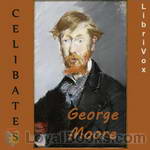 Celibates
Celibates
The author is considered the first great Irish writer of realist fiction and is said to have been an inspiration for James Joyce. Celibates is a novel of three characters: Mildred Lawson, John Norton and Agnes Lahens.They have nothing in common other than an absolute love of themselves and an inability to sympathize with others. In that vein, it constitutes a striking image of our own modern day self-absorbed society. (Introduction by James Carson) | |
By: Thomas Love Peacock (1785-1866) | |
|---|---|
 Headlong Hall
Headlong Hall
Headlong Hall is the first novel by Thomas Love Peacock, published in 1815 (dated 1816). As in his later novel Crotchet Castle, Peacock assembles a group of eccentrics, each with a single monomaniacal obsession, and derives humor and social satire from their various interactions and conversations. The setting is the country estate of Squire Harry Headlong Ap-Rhaiader, Esq. in Wales. | |
By: Arthur Machen (1863-1947) | |
|---|---|
 The Angels of Mons
The Angels of Mons
The Angels of Mons is a popular legend about a group of angels who supposedly protected members of the British army in the Battle of Mons at the outset of World War I. The story is fictitious, developed through a combination of a patriotic short story by Arthur Machen, rumours, mass hysteria and urban legend, claimed visions after the battle and also possibly deliberately seeded propaganda. | |
By: Cal Stewart (1856-1919) | |
|---|---|
 Uncle Josh's Punkin Centre Stories
Uncle Josh's Punkin Centre Stories
A collection of comedic short stories from the perspective of an old country man. | |
By: George Horace Lorimer (1869-1937) | |
|---|---|
 Letters from a Self-Made Merchant to His Son
Letters from a Self-Made Merchant to His Son
Being the Letters written by John Graham, Head of the House of Graham & Company, Pork-Packers in Chicago, familiarly known on 'Change as "Old Gorgon Graham," to his Son, Pierrepont, facetiously known to his intimates as "Piggy." George Horace Lorimer was an American journalist and author. He is best known as the editor of The Saturday Evening Post. | |
By: Francis William Bourdillon (1844-1912) | |
|---|---|
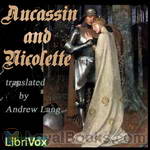 Aucassin and Nicolette.
Aucassin and Nicolette.
Aucassin and Nicolette is a medieval romance written in a combination of prose and verse called a “song-story.” Created probably in the early 13th century by an unknown French author, the work deals with the love between the son of a count and a Saracen slave girl who has been converted to Christianity and adopted by a viscount. Since Aucassin’s father is strongly opposed to their marriage, the two lovers must endure imprisonment, flight, separation in foreign lands, and many other ordeals before their ardent love and fierce determination finally bring them back together... | |
By: Moliere (1622-1673) | |
|---|---|
 The Imaginary Invalid
The Imaginary Invalid
The Imaginary Invalid is a three-act comédie-ballet by the French playwright Molière. It was first performed in 1673 and was the last work he wrote. The plot centers around Argan, the 'imaginary invalid' who is completely dependent on his doctors and wants to marry his daughter to a doctor against her will, so that he will always have medical care freely available to him. In an ironic twist of fate, Molière collapsed during his fourth performance as Argan on 17 February and died soon after. | |
By: Molière (1622-1673) | |
|---|---|
 Miser
Miser
The Miser is a comedy of manners about a rich moneylender named Harpagon. His feisty children long to escape from his penny-pinching household and marry their respective lovers. Although the 17th-century French upper classes presumably objected to the play's message, it is less savage and somewhat less realistic than Molière's earlier play, Tartuffe, which attracted a storm of criticism on its first performance. | |
By: Stephen Leacock (1869-1944) | |
|---|---|
 My Discovery of England
My Discovery of England
"In the course of time a very considerable public feeling was aroused in the United States and Canada over this state of affairs. The lack of reciprocity in it seemed unfair. It was felt (or at least I felt) that the time had come when some one ought to go over and take some impressions off England. The choice of such a person (my choice) fell upon myself. By an arrangement with the Geographical Society of America, acting in conjunction with the Royal Geographical Society of England (to both of whom I communicated my proposal), I went at my own expense."And from thence follow the impressions of Canadian political economist and humourist, Stephen Leacock, after a lecturing visit to England. | |
By: J. M. Barrie (1860-1937) | |
|---|---|
 Peter and Wendy
Peter and Wendy
Peter and Wendy tells the classic story of Peter Pan, a mischievous little boy who can fly, and his adventures on the island of Neverland with Wendy and her brothers, the fairy Tinker Bell, the Lost Boys, the Indian princess Tiger Lily, and the pirate Captain Hook. (Introduction modified from Wikipedia) | |
By: Alexander Pushkin (1799-1837) | |
|---|---|
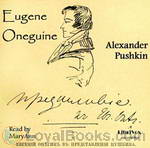 Eugene Onéguine
Eugene Onéguine
Eugene Onéguine is a classic of Russian literature, and its eponymous protagonist has served as the model for a number of Russian literary heroes (so-called superfluous men). It was published in serial form between 1825 and 1832. The first complete edition was published in 1833, and the currently accepted version is based on the 1837 publication.Almost the entire work is made up of 389 stanzas of iambic tetrameter with the unusual rhyme scheme "AbAbCCddEffEgg", where the uppercase letters represent feminine rhymes while the lowercase letters represent masculine rhymes... | |
By: Lord George Gordon Byron (1788-1824) | |
|---|---|
 The Siege of Corinth
The Siege of Corinth
In this moving poem, Byron recounts the final, desperate resistance of the Venetians on the day the Ottoman army stormed Acrocorinth: revealing the closing scenes of the conflict through the eyes of Lanciotto - a Venetian renegade fighting for the Ottomans - and Francesca - the beautiful maiden daughter of the governor of the Venetian garrison: Minotti. | |
By: Various | |
|---|---|
 The Sturdy Oak
The Sturdy Oak
At a certain committee meeting held in the spring of 1916, it was agreed that fourteen leading American authors, known to be extremely generous as well as gifted, should be asked to write a composite novel....Third, to have the novel finished and published serially during the autumn Campaign of 1917.The carrying out of these requirements has not been the childish diversion it may have seemed. Splendid team work, however, has made success possible.Every author represented, every worker on the team, has gratuitously contributed his or her services; and every dollar realized by the serial and book publication of "The Sturdy Oak" will be devoted to the Suffrage Cause... | |
By: Henry Peterson (1818-1891) | |
|---|---|
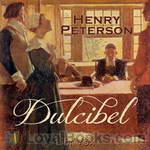 Dulcibel A Tale of Old Salem
Dulcibel A Tale of Old Salem
Dulcibel is a young, pretty and kind-hearted fictional character charged with Witchcraft during the infamous Salem Witch trials. During this time there is a group of "afflicted girls" who accuse Dulcibel and many others of Witchcraft, and during their trials show "undoubtable" proof that these people really are Witches. Will Master Raymond, Dulcibel's lover, be able to to secure Dulcibel's release from jail? Or will Dulcibel's fate be the gallows like so many other accused Witches of her time? | |
By: Owen Wister (1860-1938) | |
|---|---|
 Padre Ignacio, Or The Song Of Temptation
Padre Ignacio, Or The Song Of Temptation
Padre Ignacio has been the pastor of California mission Santa Ysabel del Mar for twenty years. In 1855 a stranger rides into the mission bringing news and a spiritual crisis. It's really more of a novella than a novel. | |
By: Maud Jean Franc | |
|---|---|
 Two Sides To Every Question: From A South Australian Standpoint
Two Sides To Every Question: From A South Australian Standpoint
'Two Sides to Every Question’: From a South Australian Standpoint is a meditation on poverty, wealth, and social aspiration set in the free settlement of Adelaide in pre-Federation Australia. The novel follows the lives of a cast of characters from different social classes as they negotiate the twists and turns in their respective fortunes. The newly-bereaved Alton family—an invalid widow and her two grown children, Tom and Nettie—sell their rural property and move to the slovenly back streets of the inner-city; they are determined to hold onto their dignity and values as they turn to earning a living for the first time... | |
By: Sewell Peaslee Wright (1897-1970) | |
|---|---|
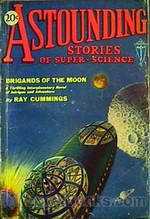 Astounding Stories 03, March 1930
Astounding Stories 03, March 1930
This is the third issue of the classic science fiction Astounding Magazine. It contains the opening chapters of a 4 part serialized novel by Ray Cummings, and stories by the prolific Capt. S. P. Meek, Will Smith and R. J. Robbins, Sewell Peaslee Wright and A. T. Locke. | |
By: Anthony Pelcher (1897-1981) | |
|---|---|
 Astounding Stories 04, April 1930
Astounding Stories 04, April 1930
The fourth issue of Astounding Stories continues Ray Cummings serial "Brigands of the Moon", along with pulp sci-fi stories by Capt. S. P. Meek, Anthony Pelcher and other authors. | |
By: William John Locke (1863-1930) | |
|---|---|
 The Fortunate Youth
The Fortunate Youth
Paul is a poor boy who grew up in London, in the household of his mother and stepfather. His journey to greatness is the subject of our story. But his desired success comes at a very high price. | |
By: Harl Vincent (1893-1968) | |
|---|---|
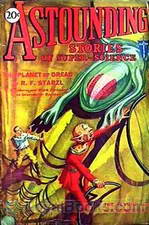 Astounding Stories 08, August 1930
Astounding Stories 08, August 1930
Issue eight of this seminal science-fiction magazine CONTENTS Murder Madness by Murray Leinster - the conclusion of this novel Earth the Maurader by Arthur J. Burks - Part 2 of a 3 Part novel as well as short Stories The Planet of Dread by R.F. Starxl, The Lord of Space by Victor Rousseau, The Second Satellite by Edmund Hamilton, Silver Dome by Harl Vincent and The Flying City by H. Thompson Rich | |
By: Ki no Tsurayuki (872-945) | |
|---|---|
 The Tosa Diary
The Tosa Diary
Ki no Tsurayuki was a Japanese waka poet of the Heian period. In 905, he was one of the poets ordered to compile the "Kokinshu - Collected Japanese Poems of Ancient and Modern Times". He is also one of the Thirty-six Poetry Immortals of Japan. The Tosa Diary, written in 935, is considered the major work of Tsurayuki. It is an account of his return to the capital Kyoto from Tosa province, where he had served as governor since 930. The journey is by boat, and Tsurayuki tells about his sea sickness and fear of pirates, his impressions of the coast, and the various offerings to placate the gods of the sea... | |
By: William Wordsworth (1770-1850) | |
|---|---|
 The River Duddon: A Series of Sonnets
The River Duddon: A Series of Sonnets
Located in a part of Cumbria that was once part of Lancashire, the River Duddon rises in the high fells of the Lake District and flows for 25 miles through varied scenery before disappearing into the sands between Millom and Barrow-in-Furness. Wordsworth’s series of sonnets, inspired by his walks along the river, were written over a period of years, but are arranged so as to follow its downward course from the fells to the sea. Part One of this reading consists of the 33 sonnets and postscript that were first published as a series in 1820... | |
By: Murray Leinster (1896-1975) | |
|---|---|
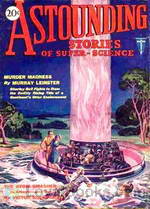 Murder Madness
Murder Madness
Murder Madness! Seven Secret Service men had completely disappeared. Another had been found a screaming, homicidal maniac, whose fingers writhed like snakes. So Bell, of the secret "Trade," plunges into South America after The Master--the mighty, unknown octopus of power whose diabolical poison threatens a continent! | |
By: Captain S. P. Meek (1894-1972) | |
|---|---|
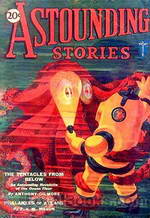 Astounding Stories 14, February 1931
Astounding Stories 14, February 1931
This issue includes "Werewolves of War" by D. W. Hall, "The Tentacles from Below" by Anthony Gilmore, "The Black Lamp" by Captain S. P. Meek, "Phalanxes of Atlans" by F. V. W. Mason, and contues with "The Pirate Planet" by Charles W. Diffin, | |
By: Charles Major (1856-1913) | |
|---|---|
 When Knighthood Was in Flower
When Knighthood Was in Flower
Set during the Tudor period of English history, When Knighthood Was in Flower tells the tribulations of Mary Tudor, a younger sister of Henry VIII of England who has fallen in love with a commoner. However, for political reasons, King Henry has arranged for her to wed King Louis XII of France and demands his sister put the House of Tudor first, threatening, "You will marry France and I will give you a wedding present – Charles Brandon's head!" | |
By: Sewell Peaslee Wright (1897-1970) | |
|---|---|
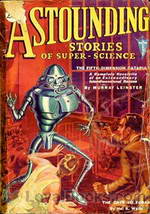 Astounding Stories 13, January 1931
Astounding Stories 13, January 1931
This issue contains "The Dark Side of Antri" by Sewell Peaslea Wright, "The Sunken Empire" by H. Thompson Rich, "The Gate to Xoran" by Hal K. Wells, "The Eye of Allah" by C. D. Willard, "The Fifth-Dimension Catapult" by Murray Leinster, and "The Pirate Planet[' by Charles W. Diffin. | |
 Astounding Stories 07, July 1930
Astounding Stories 07, July 1930
Issue seven of this seminal science-fiction magazine | |
By: Jack Williamson (1908-2006) | |
|---|---|
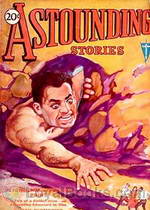 Astounding Stories 15, March 1931
Astounding Stories 15, March 1931
This issue includes "When the Mountain Came to Miramar" by Charles W. Diffin, "Beyond the Vanishing Point" by Ray Cummings, "Terrors Unseen" by Harl Vincent, the conclusion of "Phalanxes of Atlans" by F. V. W. Mason, and "The Meteor Girl" by Jack Williamson. | |
By: Charles Willard Diffin (1884-1966) | |
|---|---|
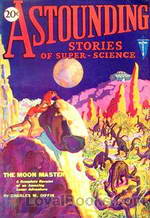 Moon Master
Moon Master
Through Infinite Deeps of Space Jerry Foster Hurtles to the Moon—Only to be Trapped by a Barbaric Race and Offered as a Living Sacrifice to Oong, their Loathsome, Hypnotic God. | |
By: Anonymous | |
|---|---|
 Mother Stories From the New Testament
Mother Stories From the New Testament
A book of the best stories from the New Testament that mothers can tell their children. | |
By: Harl Vincent (1893-1968) | |
|---|---|
 Astounding Stories 10, October 1930
Astounding Stories 10, October 1930
Issue no. 10 of the magazine brings you:- Stolen Brains by Captain S.P. MeekThe Invisible Death by Victor Rousseau Prisoners on the Electron by Robert H. Leitfred Part 2 of Jetta of the Lowlands by Ray Cummings An Extra Man by Jackson Gee along with the Readers' Corner and interesting scientific facts | |
By: Confucius 孔子 (551-479 BCE) | |
|---|---|
 Analects of Confucius
Analects of Confucius
The Analects, or Lunyu, also known as the Analects of Confucius, are considered a record of the words and acts of the central Chinese thinker and philosopher Confucius and his disciples, as well as the discussions they held. Written during the Spring and Autumn Period through the Warring States Period (ca. 475 BC - 221 BC), the Analects is the representative work of Confucianism and continues to have a substantial influence on Chinese and East Asian thought and values today. William Jennings was a rector of Grasmere, and late colonial chaplain. He served at St. John's Cathedral in Hong Kong. | |
By: Charles Blanden (1857-1933) | |
|---|---|
 Omar Resung
Omar Resung
Most of the translations of the Rubaiyat of Omar Khayyam have been in verse. However, there have been three notable exceptions to this convention; the French translation by J. B. Nicolas (1867), the English version by Justin Huntly McCarthy (1889) and another English version by Frederick Rolfe (better known as Baron Corvo, the author of Hadrian VII), published in 1903. Charles Blanden (1857 - 1933) belonged to the group known as the Chicago poets, the most famous of which was Carl Sandburg. Unlike his celebrated contemporary... | |
By: Tommaso Campanella (1568-1639) | |
|---|---|
 Sonnets of Michael Angelo Buonarroti and Tommaso Campanella
Sonnets of Michael Angelo Buonarroti and Tommaso Campanella
Michael Angelo and Campanella represent widely sundered, though almost contemporaneous, moments in the evolution of the Italian genius. Michael Angelo was essentially an artist, living in the prime of the Renaissance. Campanella was a philosopher, born when the Counter-Reformation was doing all it could to blight the free thought of the sixteenth century; and when the modern spirit of exact enquiry, in a few philosophical martyrs, was opening a new stage for European science. The one devoted all his mental energies to the realisation of beauty: the other strove to ascertain truth... | |
By: Unknown (1870-1916) | |
|---|---|
 Reginald in Russia and other sketches
Reginald in Russia and other sketches
Reginald in Russia is the title story in a collection of fifteen witty and satirical stories, sketches and one "playlet" by that master of the short story H. H. Munro, better Known as Saki. The stories are: Reginald in Russia -- The Reticence of Lady Anne -- The Lost Sanjak -- The Sex That Doesn't Shop -- The Blood-feud of Toad-Water -- A Young Turkish Catastrophe -- Judkin of the Parcels -- Gabriel-Ernest -- The Saint and the Goblin -- The Soul of Laploshka -- The Bag -- The Strategist -- Cross Currents -- The Baker's Dozen (A Playlet) -- The Mouse. | |
By: Saki (1870-1916) | |
|---|---|
 Unbearable Bassington
Unbearable Bassington
The Unbearable Bassington was the first novel written by Saki (H. H. Munro). It also contains much of the elegant wit found in his short stories. Comus (The Unbearable) Bassington, is a charming young man about town. His perversity however thwarts all his mother’s efforts to advance his prospects and lands him in hot water. Like many a “black sheep” he ends up being sent off to one of the colonies to fend for himself. This book showcases Saki’s wonderful writing and that ability to be so very funny and terribly sad at the same time. | |
By: Anonymous | |
|---|---|
 Saga of Gunnlaug the Worm-Tongue and Raven the Skald
Saga of Gunnlaug the Worm-Tongue and Raven the Skald
| |
By: William Shakespeare (1554-1616) | |
|---|---|
 Two Noble Kinsmen
Two Noble Kinsmen
The Two Noble Kinsmen is a Jacobean tragicomedy co-written by William Shakespeare and John Fletcher, first published in 1634. Set in ancient Greece during a war between Athens and Thebes, the narrative follows the title characters, Palamon and Arcite, noble youths whose friendship is destroyed by their mutual love for the beautiful Emilia. The subplot deals with the love and eventual madness of the Gaoler's Daughter, who falls hopelessly in love with Palamon. The play is based on "The Knight's Tale" by Chaucer, but also has echoes of Shakespeare's A Midsummer Night's Dream, as two of the major characters are Theseus and Hippolyta, who also appear in the earlier play. | |